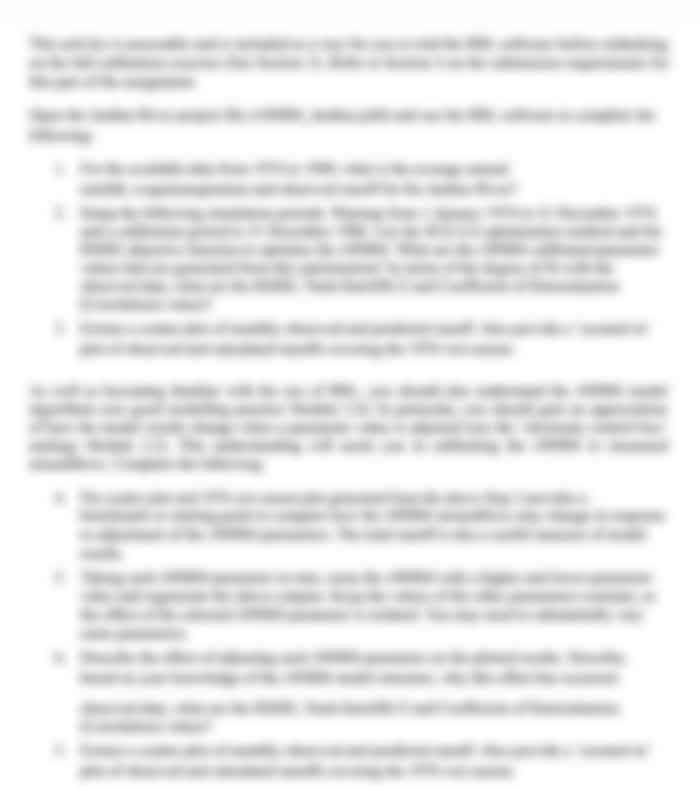Pediatric Case study (Version A)
1. Identify three appropriate therapeutic communication techniques and how they would help the nurse build a therapeutic relationship with the child and her aunt.
a. Active Listening:
Intuitive listening involves concentration, understanding and actively responding to what the aunt is saying. It fosters a trustful relationship, and the aunt will feel that she is being listened to and appreciated for her presence. In this way, the nurse receives useful information concerning Yasmins condition and the aunts concerns to provide effective and appropriate care.
b. Use of Simple Language:
Using simple language and simple terms will also be of help in ensuring that the aunt can fully understand the questions being asked and the directions given by the nurse. This also reduces confusion and therefore the aunt can follow care recommendations with ease as well as pass accurate information on the symptoms displayed by Yasmin (American Academy of Pediatrics, 2020).
c. Providing Reassurance and Support:
With encouragement and assurance, one is capable of reducing the anxieties of the aunt and the formation of a trust base. Phrases such as We are here to help Yasmin feel better will help the communication process to reassure the aunt and make sure that she is on board to help Yasmin recover.
2. Discuss three safety concerns related to Yasmins hospital admission and developmental stage.
a. Risk of Dehydration:
In the case of Yasmin, given that she is below the age of five, wet and continual diarrhea makes her a candidate for a dehydrated child. The metabolic rate of an infant or toddler is higher compared to older children as they also have less water stored inside their bodies, meaning they are prone to lose a large amount of water quickly (Centers for Disease Control and Prevention, 2020).
b. Medication Administration:
This points to feeding issues, particularly in terms of feeding Yasmin medicine, a situation that was evidenced by her spitting out the acetaminophen. This concerns her ability to be admitted to a medical facility and her ability to treat her fever which if not well managed, is likely to worsen to the next stages.
c. Infection Control:
Toddlers are in the early development stage and therefore, if ever in a hospital environment a toddler will easily get an infection. Hygiene and the avoidance of everything that might come in contact with potential pathogens are cornerstones of safety.
3. Describe four abnormal assessment findings and explain the pathophysiology of how these findings are related to dehydration.
a. Hypoactive Bowel Sounds:
The terms weak or low pitched indicate slow movements within the bowels and this could be because of inadequate fluid intake. This is attributed to the decreased circulation in these areas, leaving the intestines less active, after which they produce hypoactive bowel sounds.
b. Sticky Mucous Membranes:
Dry mucous membranes also result from dehydration since the body lacks enough fluids to produce a thick layer of mucus in the body. This may be attributed to the fact that the total body water content in certain areas is reduced together with improper electrolyte balance which causes dryness of the mucous membrane.
c. Dark Circles Under Eyes:
Crying non-stop may mean that the lady has a cold while little black dots under the face may be interpreted as meaning that the lady is probably dehydrated. This is because the rate of circulation of blood is low when it reaches this area and besides the skin of the region of the eyes is not very thick and the blood vessels are conspicuous.
d. Skin Recoil Less than 2 Seconds:
Similarly, Yasmin has skin recoil of less than 2 seconds thus this also indicates a mild level of dehydration. Normally, skin can be pinched, and depending on the rate at which it rebounds, the level of skin hydration can be assessed if the skin loses its elasticity within a period of 1 or 2 seconds or even otherwise, severe dehydrated can be anticipated (World Health Organization, 2017).
4. Identify two early (mild) and two late (severe) signs and symptoms of dehydration in pediatric patients.
Early (Mild) Signs:
a. Dry Mouth and Tongue:
The first relatively objective symptom indicating that a patient may be dehydrated is the dryness of the mucous membrane in the oral cavity and the tongue due to the reduction in saliva production.
b. Decreased Urine Output:
One of the first indicators that your baby is not getting enough fluids is that there are fewer wet diapers and it is recommended that there must be at least 4 to 6 wet diapers per day.
Late (Severe) Signs:
a. Sunken Eyes:
Edema and palpable facial dimpling, such as puffiness around the orbits and sunken eyes, signify a low patients total body water content due to decreased intracellular fluid.
b. Lethargy or Unresponsiveness:
Dehydration, if long-term, compromises the proportionate number of electrolytes and comes with neurological complications which may manifest in extreme unresponsiveness or listlessness (Fitzpatrick, 2012).
5. Describe the differences between mild, moderate, and severe dehydration in the pediatric patient.
Mild Dehydration:
It has mild symptoms that include a lack of saliva, a slightly increased desire to drink, and passage of scanty urine. The child remains vigilant and full of energy.
Moderate Dehydration:
It refers to such symptoms as extremely dry mouth or sticky tongue, sunken eyes, flabby skin rather than firm, and also less frequent or scanty urination. The child may be irritable or sleepy.
Severe Dehydration:
Their exceptional features include, but are not limited to severe impairment of water and sodium balance, extreme dryness of skin and mucous membranes, sunken fontanelles in infants, lethargy, and shock. It is important to go for a medical check-up (Levine et al. 2021).
6. Outline and provide a rationale explaining four priority nursing actions based on your assessment of Yasmin.
a. Initiate IV Fluids:
As a method of replenishing the freshwater level in the body rapidly, the administration of Intravenous fluids since the patient is not willing to take oral fluids.
b. Monitor Vital Signs:
Supplementary to evaluating the overall effectiveness of Yasmins treatment plan, monitoring vital parameters will ensure the provider identifies when the condition has deteriorated.
c. Encourage Oral Rehydration Solutions (ORS):
The ORS is helpful in the management of the compensation of fluids if Yasmin is gradually tolerating some degree of oral intake (Cho et al. 2020).
d. Educate the Aunt:
Explain to them the symptoms of dehydration, the importance of taking water, and how they should be taking their medications to carry on treatment from the comfort of their homes.
7. Explain the pathophysiological relationship between diarrhea, fluid and electrolyte imbalance, and dehydration and how these findings are connected.
Diarrhea involves the loss of more fluids and electrolytes in the gastrointestinal tract which leads to a change in fluid balance and electrolyte balance. This is because losing large amounts of fluids compromises the circulating blood volume and tissue extract, leading to dehydration. Low sodium and potassium levels which are associated with severe degrees of dehydration impair the cellular functions and metabolism and if not treated timely come with severe and even life-threatening implications (McCabe & Timmins, 2013).
8. Describe three standard treatment methods for dehydration and diarrhea in young children.
a. Oral Rehydration Therapy (ORT):
ORT can effectively be used when the degree of dehydration ranges from mild to moderate. It involves providing the right concentration of salts and sugars that are required for the replenishment of the lost fluids and electrolytes.
b. Intravenous (IV) Fluids:
In cases where depletion levels are higher or if the client cannot consume fluids orally, fluids are administered I/V to help replace the fluids within a short period and also if any of the electrolyte minerals are out of balance.
c. Zinc Supplementation:
Supplementation with Zinc has also been known to reduce both the length and intensity of diarrhea episodes which constitutes averting occurrences of dehydration and promotes (National Institute for Health and Care Excellence, 2019).
9. Describe the proper administration technique and education that should be taught to the aunt to help her administer an oral antipyretic to Yasmin on discharge to prevent her from spitting it out.
To prevent Yasmin from spitting out oral antipyretics, the nurse should demonstrate the following technique to the aunt:
- Make sure you employ a standard measuring instrument such as a calibrated syringe or dropper to be able to administer the correct quantity of the fluid needed (Stein-Parbury, 2017).
- Administer this slowly; introduce the syringe into the side of the childs cheek, not the tongue to avoid vomiting.
- It is safe to give your companion a small amount of water or juice, if allowed by the age, after the medication.
- Education should involve conveying to the aunt certain aspects regarding the medications i.e. the necessity of sticking to the dosage schedule, not giving Yasmin more than the prescribed amounts, and the technique of handling the child when dispensing the drugs, which is holding her firmly and talking to her softly.
10. Describe three assessment findings that indicate improvement in the dehydrated child. (3 marks)
a. Increased Urine Output:
If the baby is passing more wet diapers it shows that the baby is being well-hydrated and also the babys kidneys are working more efficiently.
b. Normalized Vital Signs:
Normal pulse rate and blood pressure signify a return to the baseline status and thus indicate adequate rehydration status and an increase in blood volume (The Royal Childrens Hospital Melbourne, 2019).
c. Improved Skin Turgor and Moist Mucous Membranes:
These include smooth, non-taut skin that does not retain the dimples and rapidly returns to normal position and midline moist mucous membranes as an indication of restored clients fluid balance.
Are you struggling to keep up with the demands of your academic journey? Don't worry, we've got your back!
Exam Question Bank is your trusted partner in achieving academic excellence for all kind of technical and non-technical subjects. Our comprehensive range of academic services is designed to cater to students at every level. Whether you're a high school student, a college undergraduate, or pursuing advanced studies, we have the expertise and resources to support you.
To connect with expert and ask your query click here Exam Question Bank

